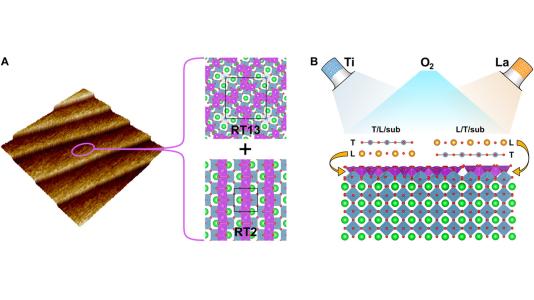
Scientific Achievement
Using in situ surface X-ray diffraction, we find that a TiO2 adlayer on the SrTiO3(001) surface is an important, active participant in the growth process and that layer rearrangement occurs throughout deposition.
Significance and Impact
Our in situ results challenge commonly held assumptions about heteroepitaxial growth on complex oxide crystals, demonstrating the critical role of surface stoichiometry on the growth mechanism.
Research Details
- Performed in situ synchrotron X-ray studies at the Advanced Photon Source during synthesis by molecular beam epitaxy.
- Crystal truncation rods were measured after the deposition of each monolayer, using non-resonant and resonant scattering.
- The combined data sets were analyzed with a density functional theory-constrained procedure: this ensures the physicality of the fits and allows quantitative determination of the surface structures during growth.
Work was performed at Argonne National Laboratory.
Argonne National Laboratory seeks solutions to pressing national problems in science and technology. The nation’s first national laboratory, Argonne conducts leading-edge basic and applied scientific research in virtually every scientific discipline. Argonne researchers work closely with researchers from hundreds of companies, universities, and federal, state and municipal agencies to help them solve their specific problems, advance America’s scientific leadership and prepare the nation for a better future. With employees from more than 60 nations, Argonne is managed by UChicago Argonne, LLC for the U.S. Department of Energy’s Office of Science.
The U.S. Department of Energy’s Office of Science is the single largest supporter of basic research in the physical sciences in the United States and is working to address some of the most pressing challenges of our time. For more information, visit https://energy.gov/science.